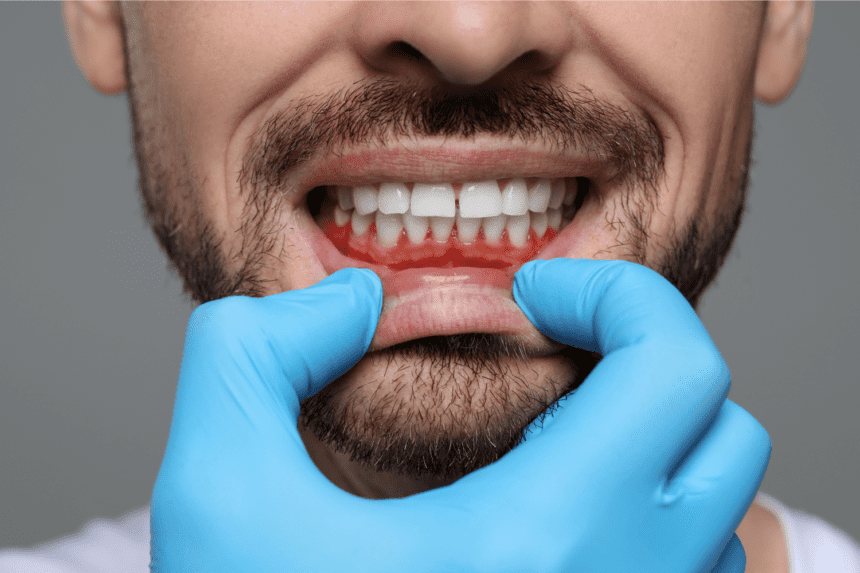Understanding gingivitis
Gingivitis is the first phase of gum disease (periodontal disease). It occurs when plaque, tartar, and bacteria accumulate on your teeth, resulting in red, swollen, and bleeding gums. To succeed in treating gingivitis, one must seek the aid of a dentist. However, if treating gingivitis is neglected, it can progress to periodontal disease.
Understanding periodontal disease
Periodontitis is a dangerous type of gum disease infection. It’s a bacterial infection that causes gum inflammation in the soft tissues surrounding your teeth. Left untreated, it reduces the bone that supports your teeth, causing movement and tooth loss.
Expert Tips for Gingivitis pain treatment
1. Scaling and root planing: This technique is comparable to standard dental cleaning, except it goes deeper behind the gums. Scaling eliminates tartar and germs. Planing smoothes the surfaces of your tooth roots, preventing microorganisms from attaching.
2. Improved oral hygiene: A decent dental cleaning generally helps in treating gingivitis. However, once you have returned home, you must maintain the cleanliness. You’ll learn how to clean your teeth correctly and get assistance scheduling checkups.
3. Antibacterial mouthwash: Using an antibacterial mouthwash can help eliminate disease-causing microorganisms.
4. Dental work repair: Your dentist may repair or remove crowns, fillings, or bridges that are growing or do not fit well. Smoother surfaces are easier to clean.
Expert Tips for Periodontal disease treatment
1. Antibiotics: Your dentist may prescribe oral antibiotics to treat gum infection. Alternatively, they may use a topical antibiotic beneath your gums to target the afflicted region.
2. Periodontal scaling and root planing: These are extensive dental cleaning procedures that use local anesthetics to numb the gums and eliminate microorganisms beneath the gum line. It smoothes the dental roots to reduce plaque buildup. Gum therapy usually takes numerous visits and a monthly check-up with a periodontist to determine its success.
3. Gum grafts: Gum recession caused by periodontitis exposed tooth roots, necessitating gum graft surgery to restore lost tissue, enhance the look of the smile, and limit the risk of additional recession.
4. Flap surgery: A periodontist makes an incision along the gum line, lifts gum tissue away from the teeth to see roots, and thoroughly cleans them. If infection results in bone loss, the periodontist may reconstruct the bone beneath the ridge to facilitate cleaning.
Conclusion
To conclude, knowing about gingivitis and periodontal disease is critical for preserving dental health. Treating gingivitis can be prevented and managed with adequate dental care. Without gum treatment for gum disease, it can progress to periodontitis, a more serious condition that can cause tooth loss and other issues. Regular dental check-ups, proper periodontitis, oral hygiene, and lifestyle changes like quitting smoking and managing diabetes can dramatically lower the risk. Early identification and treatment are critical for limiting the advancement of these diseases and maintaining long-term oral health.


Leave a Reply